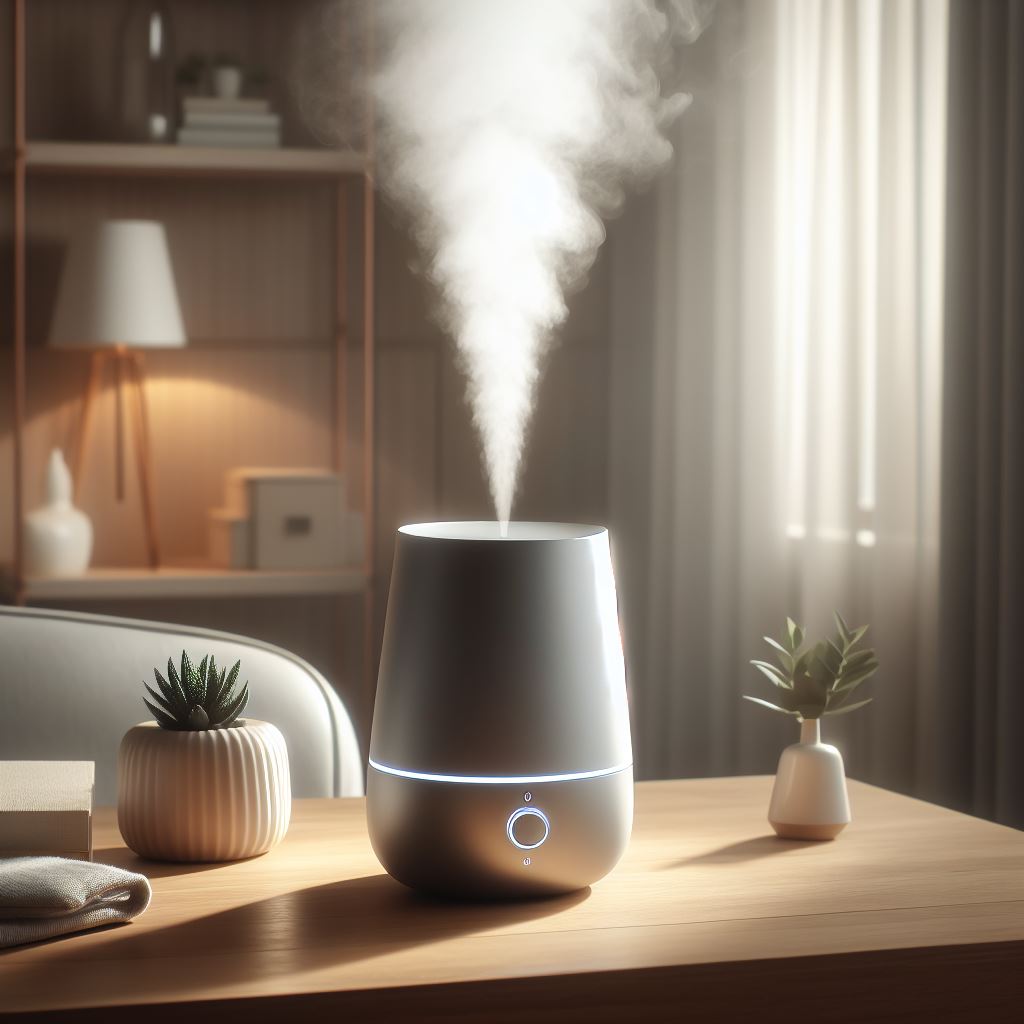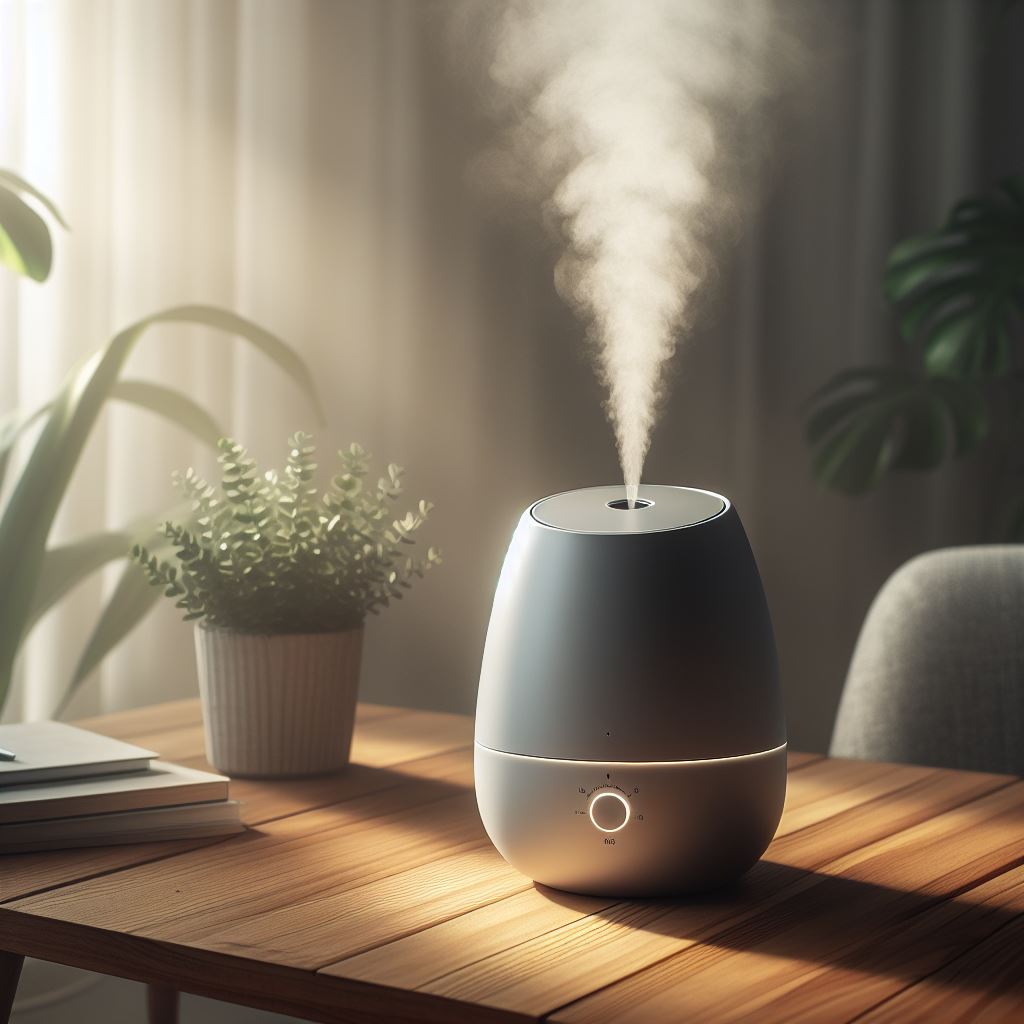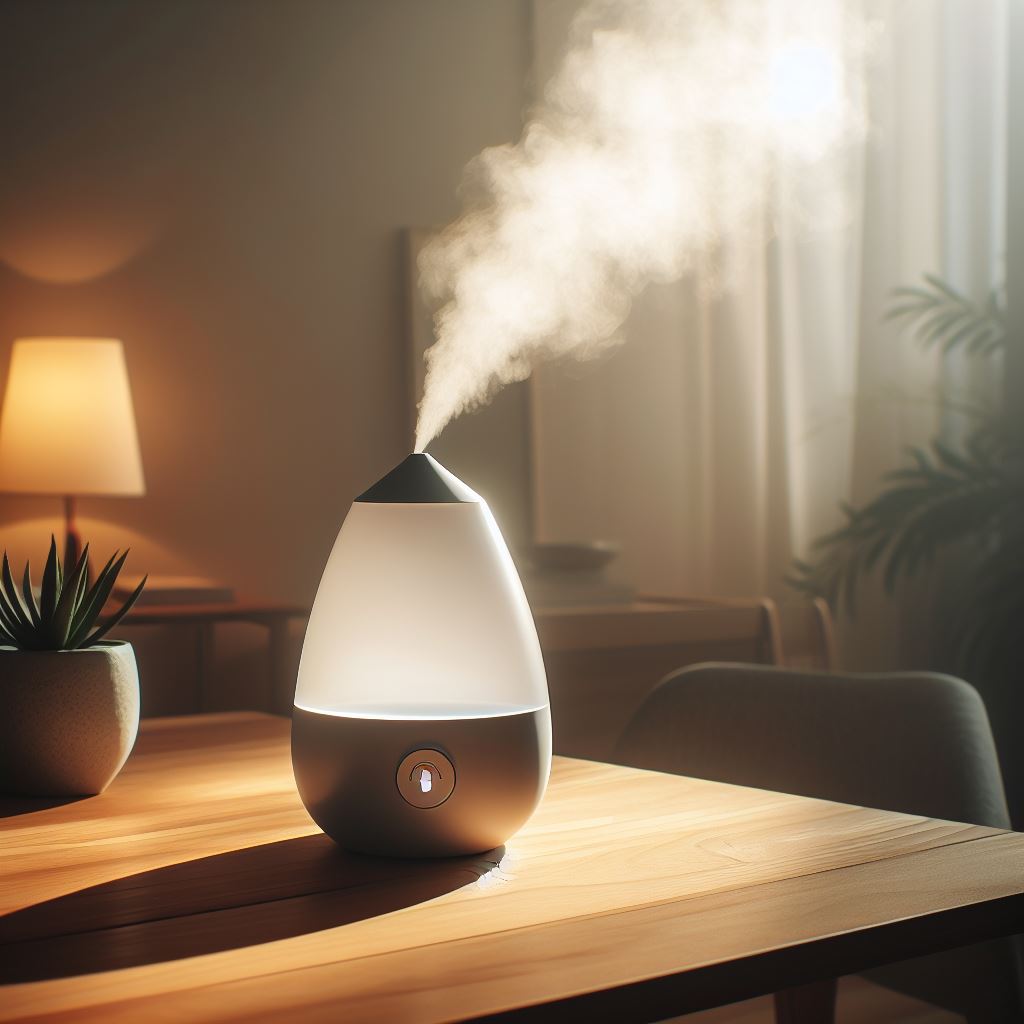The Role of MLCC in Humidifier

Multilayer Ceramic Capacitors (MLCCs) are essential components in modern humidifiers, playing a crucial role in their functionality and performance. These tiny but powerful components are key players in ensuring that your humidifier operates efficiently and effectively.
One of the primary functions of MLCCs in humidifiers is to regulate the flow of electricity, ensuring that the device operates safely and reliably. MLCCs help stabilize the electrical current, preventing fluctuations that could potentially damage the humidifier or compromise its performance.
Moreover, MLCCs contribute to the energy efficiency of humidifiers. By maintaining a stable electrical flow, MLCCs help reduce energy consumption, making humidifiers more environmentally friendly and cost-effective to operate.
In addition to their electrical functions, MLCCs also play a role in the overall performance of humidifiers. These components help regulate the humidity levels produced by the device, ensuring that the air in your home remains at the optimal moisture level for your comfort and health.
Furthermore, MLCCs contribute to the safety features of humidifiers. These components help protect the device from electrical surges and other potential hazards, ensuring that your humidifier operates safely and reliably for years to come.

Types of MLCCs Used in Humidifiers
Multilayer Ceramic Capacitors (MLCCs) are available in various types and specifications, each suited for different applications and environments. When it comes to humidifiers, several specific types of MLCCs are commonly used due to their reliability, performance, and size. Here are some of the types you might find in a humidifier:
X7R MLCCs: These are popular choices for humidifiers due to their stable temperature characteristics and high capacitance values. X7R MLCCs are known for their reliability and are often used in applications where temperature fluctuations are common.
Y5V MLCCs: Although less common in humidifiers, Y5V MLCCs offer high capacitance values and are suitable for applications where space is limited. However, they are more sensitive to temperature changes compared to X7R MLCCs.
COG (NPO) MLCCs: These MLCCs are known for their stability and low capacitance tolerance. While not as common in humidifiers, COG MLCCs are suitable for applications where precise capacitance values are required.
High Voltage MLCCs: Some humidifiers, especially those with advanced features, may require MLCCs with higher voltage ratings. High voltage MLCCs are designed to withstand higher voltages without breakdown, ensuring the safety and reliability of the humidifier.
Surface Mount MLCCs: Most modern humidifiers use surface mount MLCCs due to their compact size and compatibility with automated assembly processes. These MLCCs are available in various sizes and capacitance values to suit different humidifier designs.
When selecting MLCCs for humidifier applications, it’s important to consider the specific requirements of the device, including voltage ratings, capacitance values, and temperature characteristics. By choosing the right types of MLCCs, manufacturers can ensure that their humidifiers operate reliably and efficiently.
How MLCCs Enhance the Energy Efficiency and Performance of Humidifiers
Multilayer Ceramic Capacitors (MLCCs) play a crucial role in enhancing the energy efficiency and overall performance of humidifiers. These small but powerful components contribute to the functionality of humidifiers in several key ways:
Stabilizing Electrical Current: MLCC helps stabilize the electrical current flowing through the humidifier, ensuring a consistent and reliable operation. By regulating the flow of electricity, MLCCs help prevent fluctuations that could lead to energy wastage or damage to the device.
Reducing Power Consumption: By maintaining a stable electrical flow, MLCCs help reduce the overall power consumption of humidifiers. This not only makes the device more environmentally friendly but also helps lower energy bills for users.
Enhancing Humidifier Performance: MLCCs contribute to the overall performance of humidifiers by ensuring that they operate efficiently. By stabilizing the electrical current, MLCCs help maintain optimal humidity levels in the air, ensuring a comfortable and healthy indoor environment.
Improving Reliability: MLCCs are known for their reliability and durability, making them ideal components for humidifiers. By using high-quality MLCCs, manufacturers can ensure that their humidifiers operate reliably for years to come, reducing the need for repairs or replacements.
Enabling Advanced Features: Some humidifiers come with advanced features such as humidity sensors and programmable settings. MLCCs play a crucial role in enabling these features, ensuring that the humidifier operates efficiently and accurately.
In conclusion, MLCCs are essential components in modern humidifiers, contributing to their energy efficiency, performance, and reliability. By using high-quality MLCCs, manufacturers can create humidifiers that not only provide optimal performance but also help users save energy and reduce their environmental impact.
How MLCCs Contribute to the Safety Features of Humidifiers
Multilayer Ceramic Capacitors (MLCCs) play a crucial role in ensuring the safety and reliability of humidifiers. These components are key contributors to several safety features that help protect both the device and its users:
Overcurrent Protection: MLCCs are often used in humidifiers to provide overcurrent protection. These components help regulate the flow of electricity, ensuring that the device does not draw more current than it can safely handle. In the event of a power surge or other electrical fault, MLCCs can help prevent damage to the humidifier and reduce the risk of fire or electrical shock.
Voltage Regulation: MLCCs help regulate the voltage supplied to different components of the humidifier, ensuring that each part receives the correct voltage for optimal performance. By stabilizing the voltage, MLCCs help prevent damage to sensitive components and reduce the risk of electrical hazards.
Short-Circuit Protection: MLCCs are also used in humidifiers to provide short-circuit protection. These components help detect and respond to short circuits, quickly cutting off the flow of electricity to prevent damage to the device or other components.
Temperature Monitoring: Some humidifiers use MLCCs to monitor the temperature of various parts of the device. By detecting overheating, MLCCs can trigger safety mechanisms to prevent damage or shutdown the device to prevent further issues.
EMI Filtering: MLCCs are often used in humidifiers to filter out electromagnetic interference (EMI) from other electronic devices. This helps ensure that the humidifier operates smoothly without interference from external sources, enhancing its overall safety and performance.
In conclusion, MLCCs are essential components in modern humidifiers, contributing to their safety features and overall reliability. By using high-quality MLCCs, manufacturers can create humidifiers that not only provide optimal performance but also prioritize the safety of their users.
Common MLCC Issues in Humidifiers and How to Address Them
Multilayer Ceramic Capacitors (MLCCs) are essential components in humidifiers, but like all electronic components, they can experience issues that affect the performance of the device. Here are some common MLCC issues in humidifiers and how to address them:
Cracking: MLCCs can sometimes crack due to mechanical stress or thermal cycling. To address this issue, manufacturers can use MLCCs with higher mechanical stress ratings or implement design changes to reduce stress on the capacitors.
Capacitance Drift: Over time, the capacitance of MLCCs can drift, leading to performance issues in humidifiers. To mitigate this issue, manufacturers can use MLCCs with lower temperature coefficients or implement regular calibration and maintenance procedures.
Voltage Overload: Excessive voltage can cause MLCCs to fail. To prevent voltage overload, manufacturers should ensure that the humidifier is designed to operate within the specified voltage range and that proper voltage regulation mechanisms are in place.
Temperature Sensitivity: MLCCs are sensitive to temperature fluctuations, which can affect their performance. To address this issue, manufacturers can use MLCCs with improved temperature stability or implement thermal management techniques in the humidifier design.
Humidity Exposure: Humidifiers are exposed to high levels of humidity, which can affect the performance of MLCCs. To protect MLCCs from humidity exposure, manufacturers can use conformal coatings or encapsulation techniques to seal the capacitors from moisture.
Mechanical Damage: MLCCs can be damaged during assembly or operation due to mechanical stress. To prevent mechanical damage, manufacturers should handle MLCCs with care during assembly and ensure that the humidifier design minimizes mechanical stress on the capacitors.
By addressing these common MLCC issues, manufacturers can ensure that their humidifiers operate reliably and effectively, providing users with the desired level of humidity control and comfort.

Tips for Choosing MLCCs for Humidifiers
Selecting the right Multilayer Ceramic Capacitors (MLCCs) is crucial for ensuring the optimal performance and reliability of humidifiers. Here are some tips to help you choose the right MLCCs for your humidifier:
Capacitance Value: Choose MLCCs with capacitance values that meet the requirements of your humidifier. Higher capacitance values are typically required for larger humidifiers or those with higher humidity output.
Voltage Rating: Select MLCCs with voltage ratings that exceed the maximum operating voltage of your humidifier. This helps ensure that the capacitors can handle any voltage spikes or fluctuations.
Temperature Stability: Look for MLCCs with good temperature stability to ensure reliable performance across a range of operating temperatures. This is especially important for humidifiers that may be used in environments with varying temperatures.
Size and Form Factor: Consider the size and form factor of the MLCCs to ensure they fit within the constraints of your humidifier’s design. Surface mount MLCCs are commonly used in humidifiers due to their compact size and compatibility with automated assembly processes.
Reliability and Durability: Choose MLCCs from reputable manufacturers known for producing high-quality, reliable capacitors. This helps ensure that your humidifier operates consistently and has a long service life.
Environmental Considerations: Consider the operating environment of your humidifier, including factors such as humidity levels and temperature fluctuations. Choose MLCCs that are designed to withstand these conditions.
Cost: While cost is an important factor, prioritize quality and reliability when choosing MLCCs for your humidifier. Investing in high-quality capacitors can help prevent issues and costly repairs down the line.
By following these tips, you can select MLCCs that are well-suited to your humidifier’s requirements, ensuring optimal performance and reliability.
MLCC Maintenance in Humidifiers: Tips for Optimal Performance
Multilayer Ceramic Capacitors (MLCCs) are key components in humidifiers, contributing to their functionality and performance. Proper maintenance of MLCCs is essential to ensure that humidifiers operate efficiently and effectively. Here are some tips for maintaining MLCCs in humidifiers:
Regular Cleaning: Dust and debris can accumulate on MLCCs over time, affecting their performance. Regularly clean the interior of the humidifier to remove any buildup that may be present.
Avoid Overloading: Overloading the humidifier can put stress on MLCCs and other components. Follow the manufacturer’s recommendations for usage and avoid exceeding the recommended operating limits.
Check for Signs of Wear: Inspect MLCCs regularly for signs of wear or damage, such as cracks or discoloration. Replace any damaged capacitors to prevent further issues.
Monitor Humidity Levels: Excessive humidity can affect the performance of MLCCs. Use a hygrometer to monitor humidity levels and adjust the humidifier settings as needed to maintain optimal humidity levels.
Ensure Proper Ventilation: Proper ventilation is important to prevent overheating of MLCCs. Ensure that the humidifier is placed in a well-ventilated area and that air can flow freely around the capacitors.
Follow Manufacturer’s Recommendations: Follow the manufacturer’s recommendations for maintenance and care of the humidifier, including any specific instructions for MLCC maintenance.
Consider Professional Inspection: If you are unsure about the condition of MLCCs in your humidifier, consider having the device inspected by a professional. They can identify any issues and recommend appropriate repairs or replacements.
By following these tips, you can help ensure that MLCCs in your humidifier remain in optimal condition, contributing to the efficient and reliable operation of the device.
